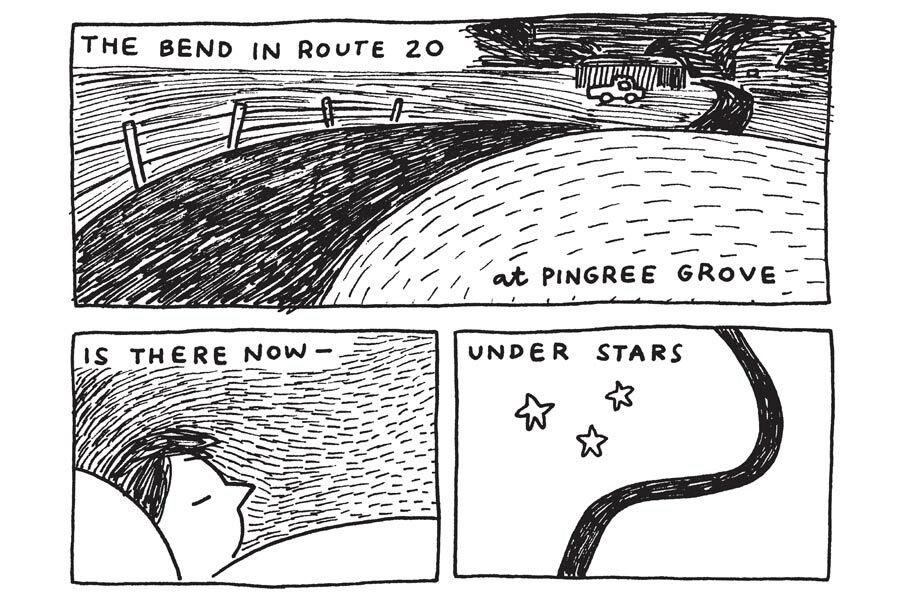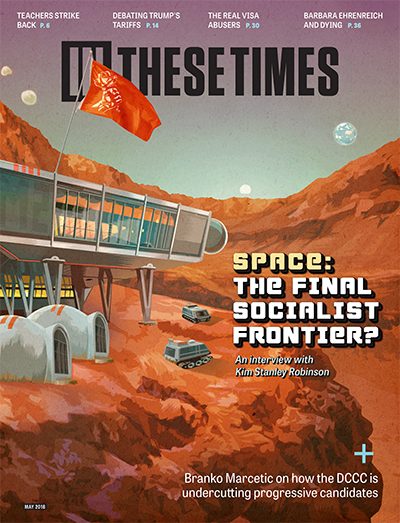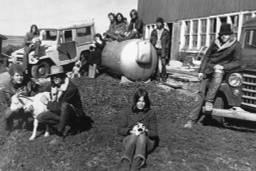A Middle America You’ll Never See in the Coastal Media
The micro-comics in John Porcellino’s From Lone Mountain show a way of life the media largely ignores.
Jessa Crispin

I first came across John Porcellino’s self-published King-Cat Comics, and so many like them, in the 1990s as I was sifting through micro-comics, zines and chapbooks in bookstores in places like Lawrence, Kansas. The settings of his comics are where I spent my youth, from rural Kansas to Denver through Iowa and up to Chicago. And the stories echo my memories — driving aimlessly through flat prairie land blasting punk music, eating bad white-people Midwestern tacos and playing darts with eccentric old men in dive bars lit up with Christmas lights. These were not stories I read much in books, or saw on the television.
Middle America remains disconnected from the culture at large, ignored by mass media except when coastal reporters drop in to interview a Trump voter or a white nationalist. It sometimes seems the only rural Americans on the internet are those whose job it is to explain rural America back to the rest of the world, a la Hillbilly Elegy and The View from Flyover Country.
The comics in John Porcellino’s new collection, From Lone Mountain, are the kind of quiet, finely observed stories that capture the pace and quality of life in Middle America. The stories are short — often only a page — and concern the mundane goingson and mild anxieties of a white, married Midwestern man. He interacts with his cat or notices an anthill on a walk. They are emotional without dipping into sentimentality or tweeness. A Zen quality pervades both the observations and the artistic style, mostly line drawings, simple and direct.
We meet figures like Square-Head John, a southern Colorado man who is tremendously good at the arcade claw game, the one where you try to win stuffed animals by grabbing onto them with a mechanized claw. Through the year he fills a room in his house with the toys, from one wall to another, before bagging them up to donate at Christmas. The vignette is short and mentioned as a small part of another story about a road trip, but figures like John are sketched out so masterfully by Porcellino that they stick in the mind.
From Lone Mountain made me nostalgic, and not only for being 19 with dyed pink hair in Lawrence. Porcellino’s comics made me miss what we lost when the independent publishing scene that flourished in the 1980s and 1990s gave way to the internet. The web promised to be a democratizing force, decentralizing media attention — and hence power — from the usual elites and allowing us to hear from marginalized voices the world over. And the early days of the internet did resemble zine culture. Writers, artists and nerds took to the web to create stimulatingly ugly sites, to write and publish their diaries, to explore their passions.
Once people realized they could make money from the internet, things changed. Today, the most popular creators on the internet are exactly the same people who we hear from in traditional media: white men and women, located on the coasts, well-educated, and affiliated with power centers like universities and media conglomerates.
Social media has also fragmented audiences and shortened attention spans. Rather than spending time on one creator, we scroll past dozens, only pausing if someone says something shocking or salacious.
Porcellino’s quiet stories about working-class white men would not translate well into an internet culture that runs on outrage and spectacle. I am grateful I can simply enjoy the story of Square-Head John without knowing who he voted for.
As starkly beautiful as Porcellino’s stories can be, they do sometimes come up short. They are populated almost exclusively with white men. He writes about his girlfriend and then wife, Misun, as his great love, but she rarely shows up as a fullfledged character. (In one of the few stories where she appears at length, she nags him to deal with a bug in the house.) These are stories from his personal experience, and he is a mostly apolitical white man. His working-class experiences make no mention of unions or solidarity, and his road trips through the Midwest don’t lead him to encounter anyone of a different race. The zine and indie comic culture was not a meritocracy, either, and these self-centered white male creators like Porcellino or Jeffrey Brown, another Midwestern cartoonist, always did get more attention than more radical counterparts, like punk feminist Julie Doucet, poverty and single motherhood chronicler Ariel Gore or the political and queer Osa Atoe.
Zines do still exist, although the places that used to sell them, independent bookstores and record shops, have disappeared from the landscape, pushed out by chains which were then pushed out by the internet. Ironically, and tragically, the easiest place to find them is online, lessening the pleasure of the aimless search and unintentional discovery. Yet zines remain a space for the untold stories and unheard voices that fill our nation, providing respite from the noisy, angry internet and the insulated mass media. Sometimes it is good simply to be reminded that they exist.








